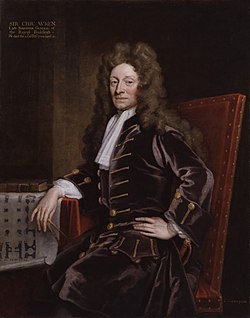
The post of Surveyor of the Fabric of St Paul's Cathedral was established in 1675. [n 1] [2] The role is an architectural one, with the current holder being responsible for the upkeep and maintenance of the cathedral and its buildings. [n 2] In the past, the role has involved overseeing new construction work as well as restoration and architectural conservation. [1] The post has been held by the following people:
Contents
- Christopher Wren (1675–1723) [2]
- John James (1723–1746) [2]
- Henry Flitcroft (1746–1756) [2]
- Stiff Leadbetter (1756–1766) [2]
- Robert Mylne (1766–1811) [2]
- Samuel Pepys Cockerell (1811–1819) [2]
- Charles Robert Cockerell (1819–1852) [2]
- Francis Penrose (1852–1897) [2]
- Somers Clarke (1897–1906) [2]
- Mervyn Edmund Macartney (1906–1931) [2]
- Walter Godfrey Allen (1931–1956) [2]
- John Seely, Lord Mottistone (1956–1963) [2]
- Paul Edward Paget (1963–1969) [2]
- Bernard Feilden (1969–1977) [2]
- Robert Potter (1978–1984) [2] [3]
- William Whitfield (1985–1990) [3]
- Martin Stancliffe (1990–2011) [3] [4]
- Oliver Caroe (2011–present) [4]